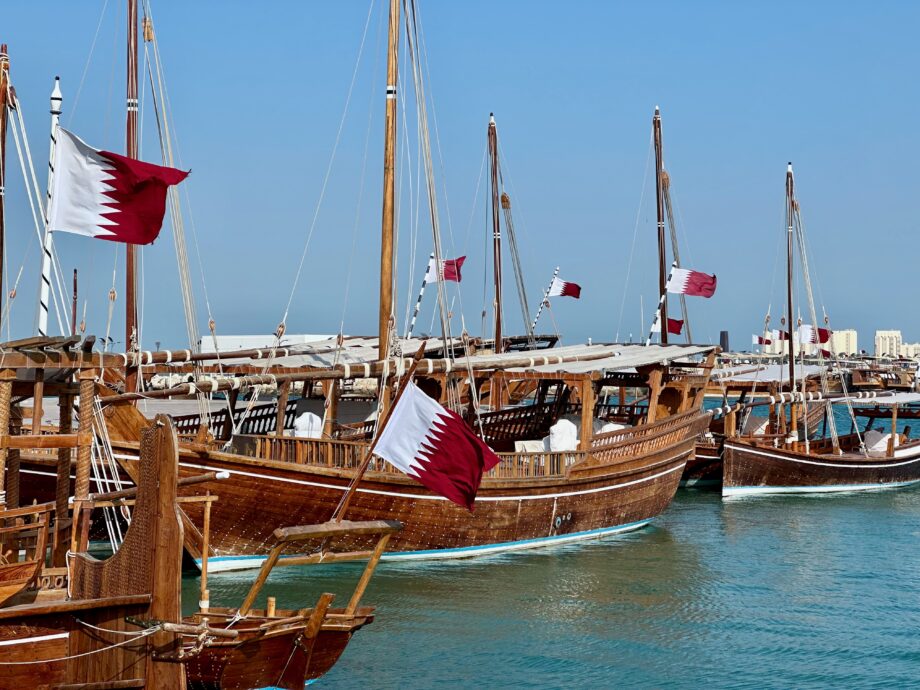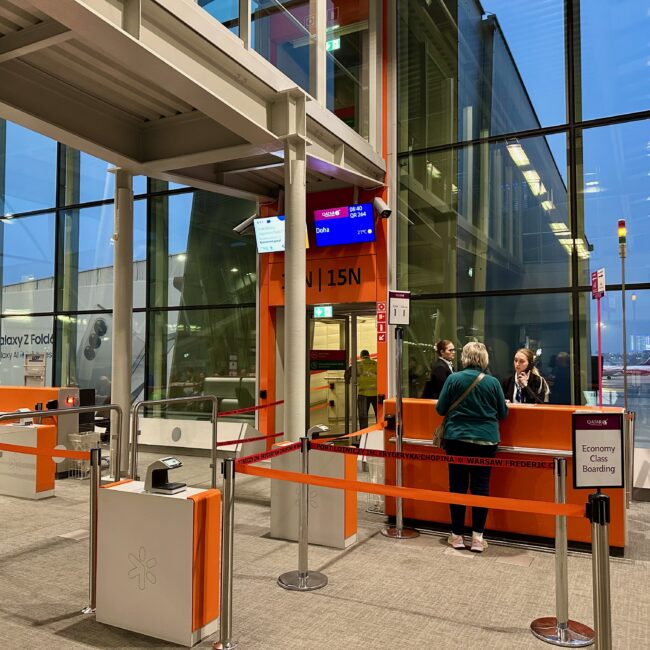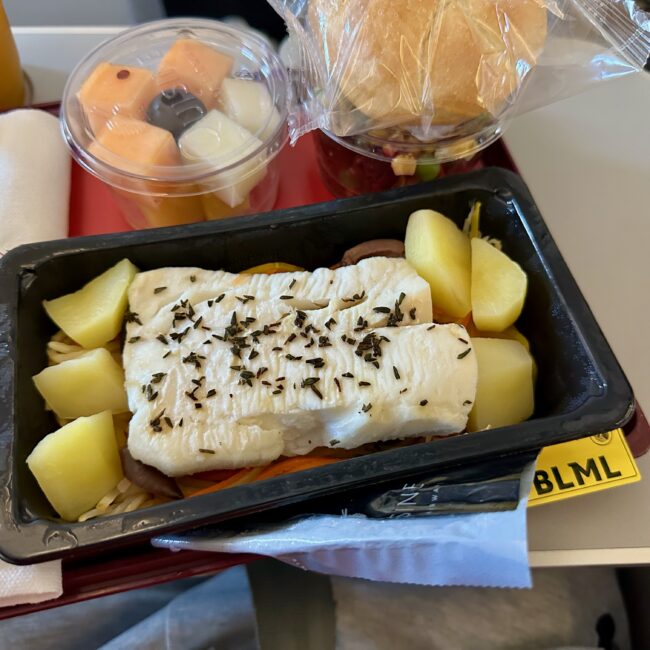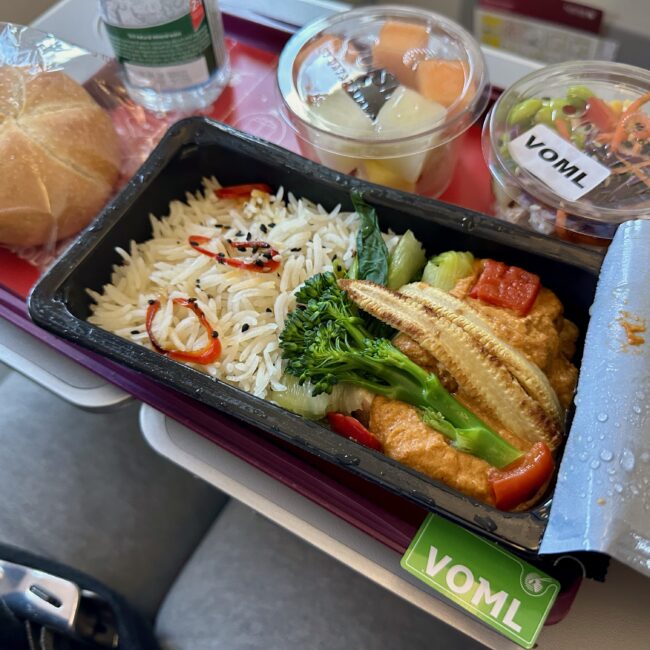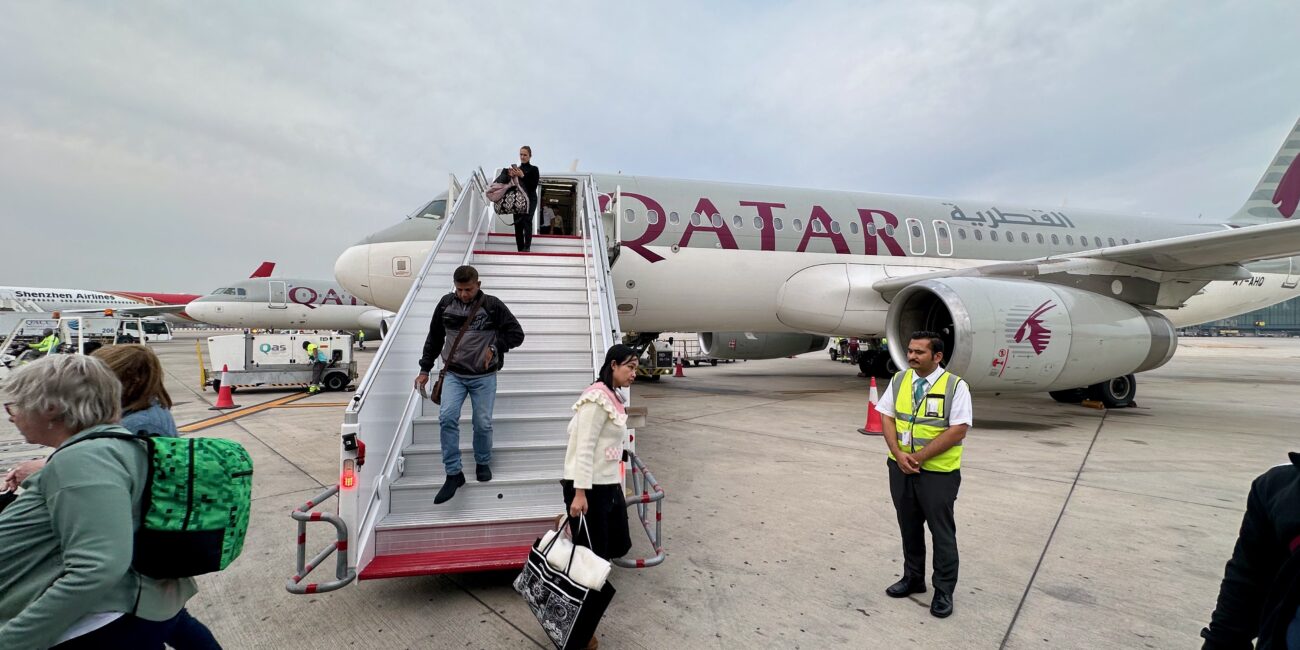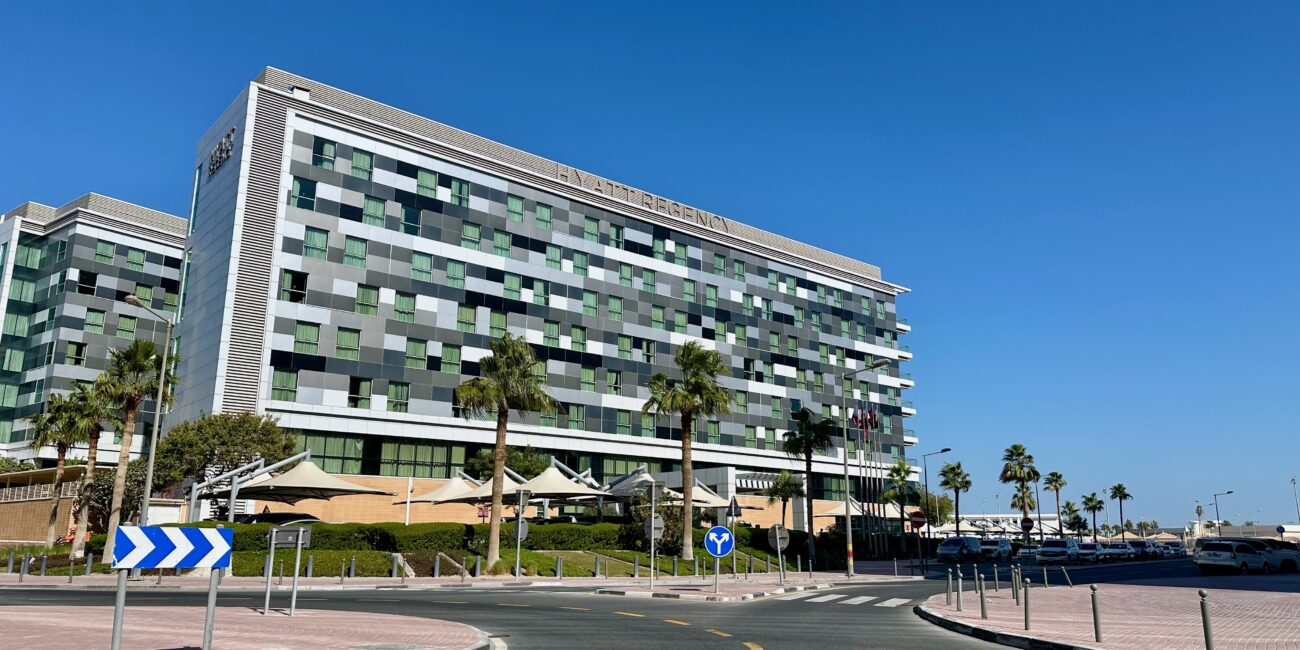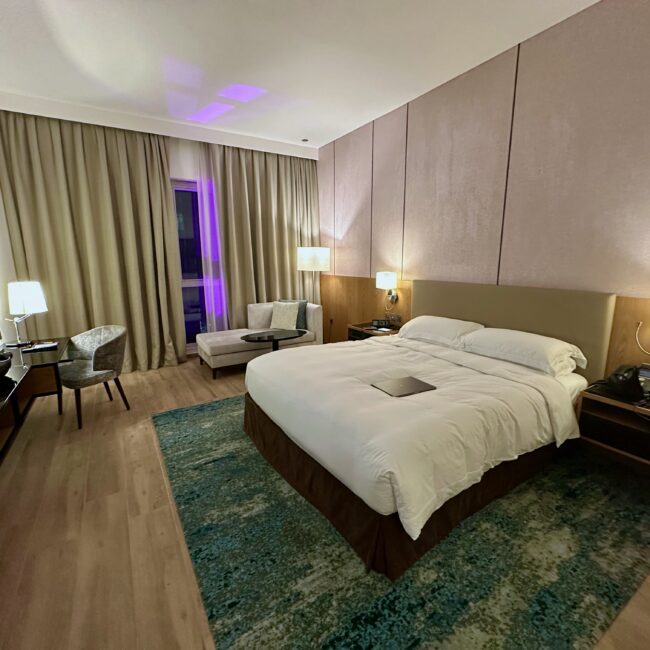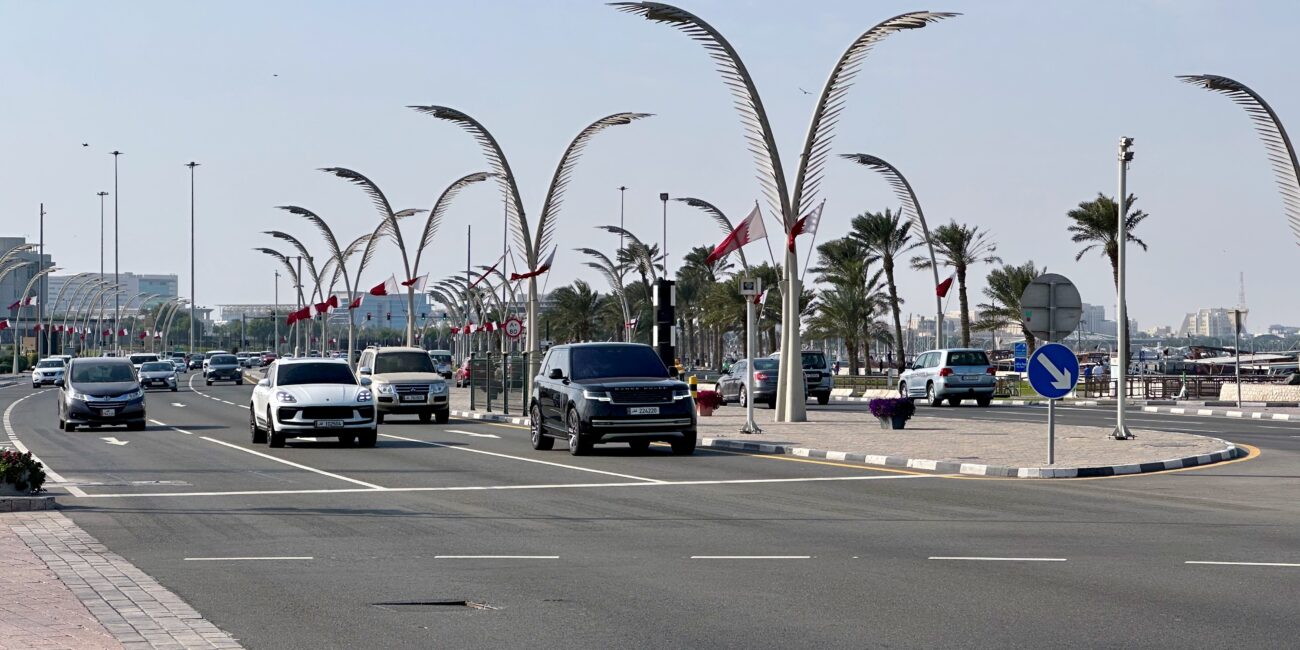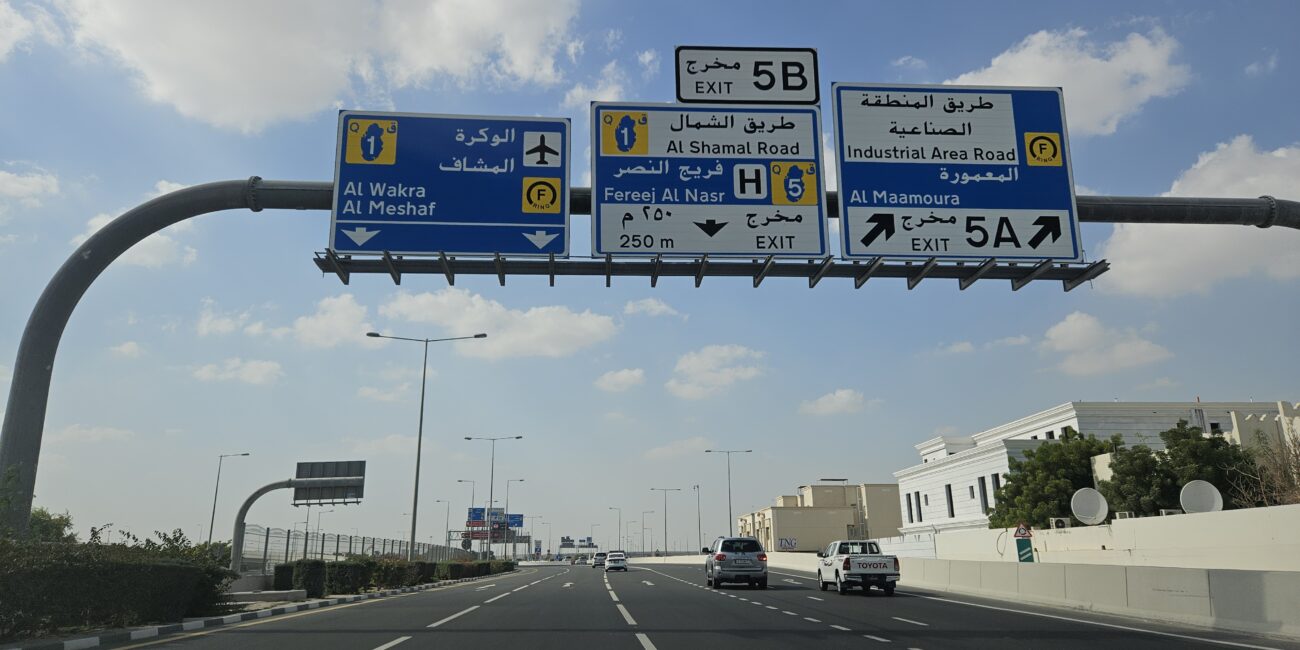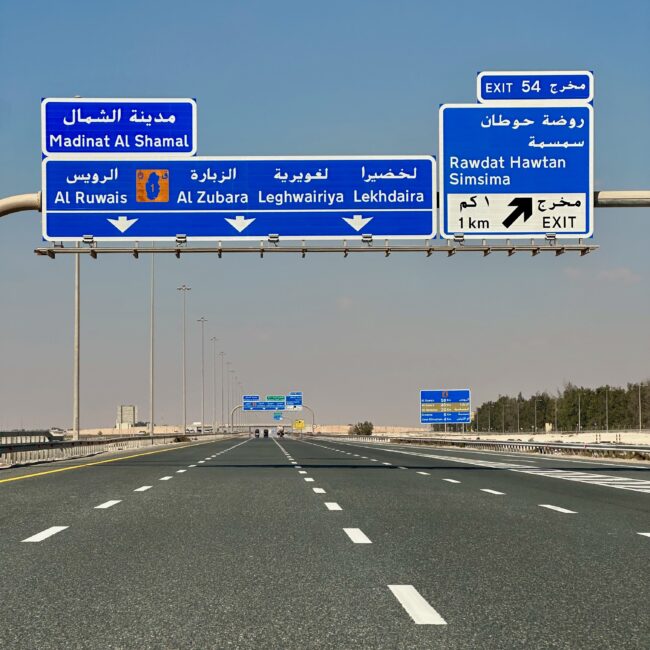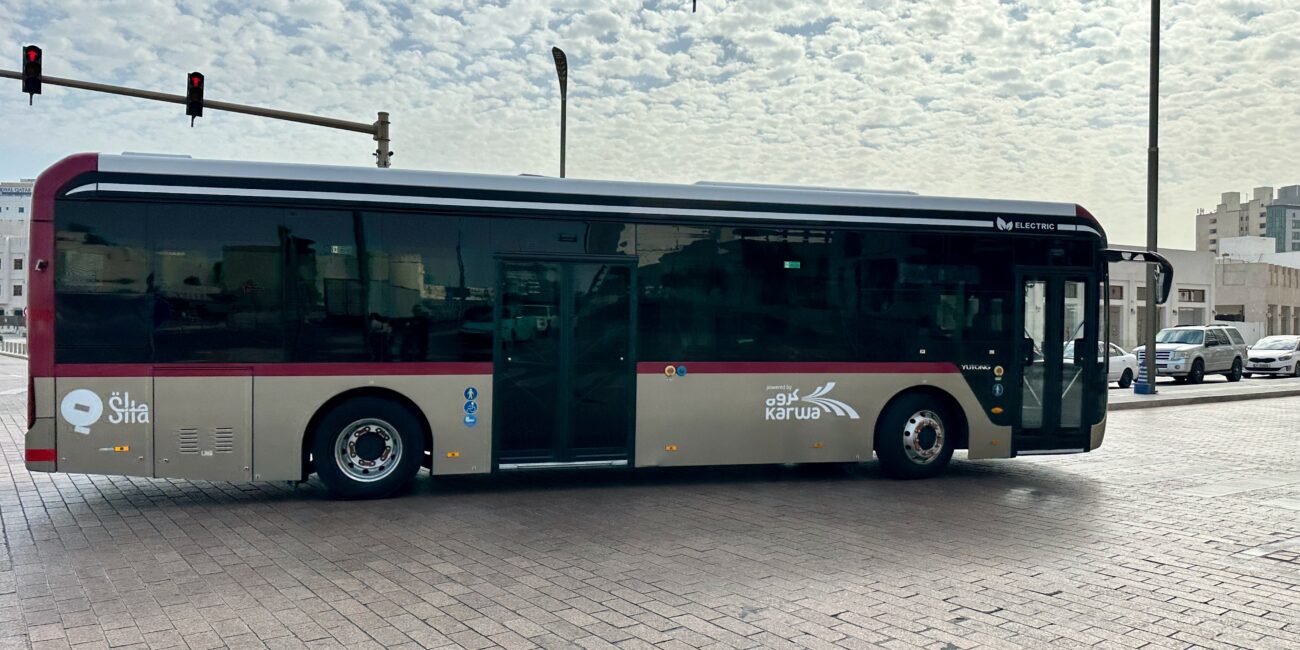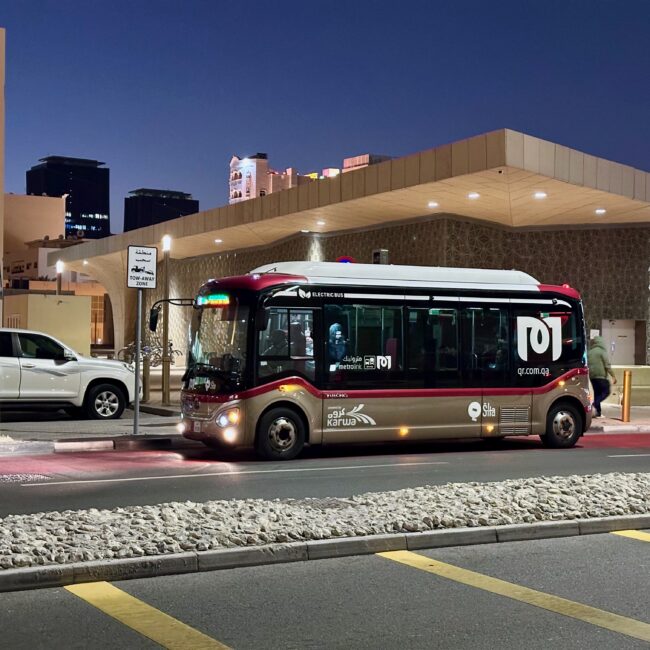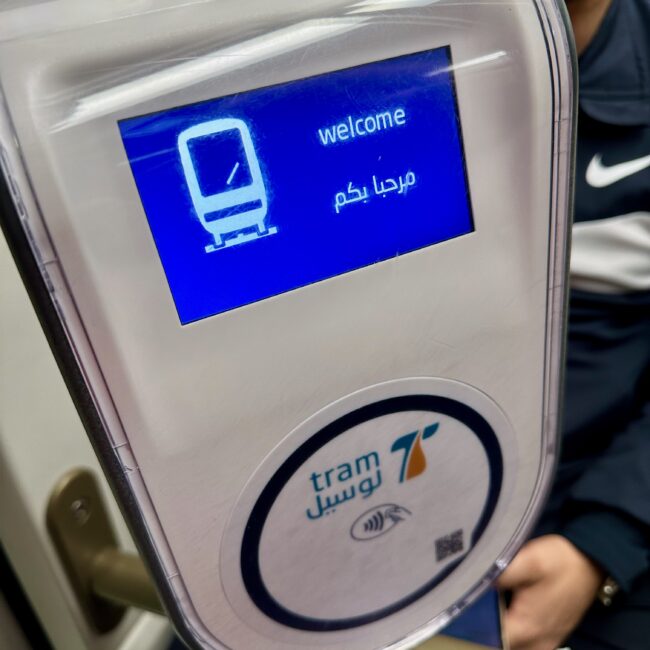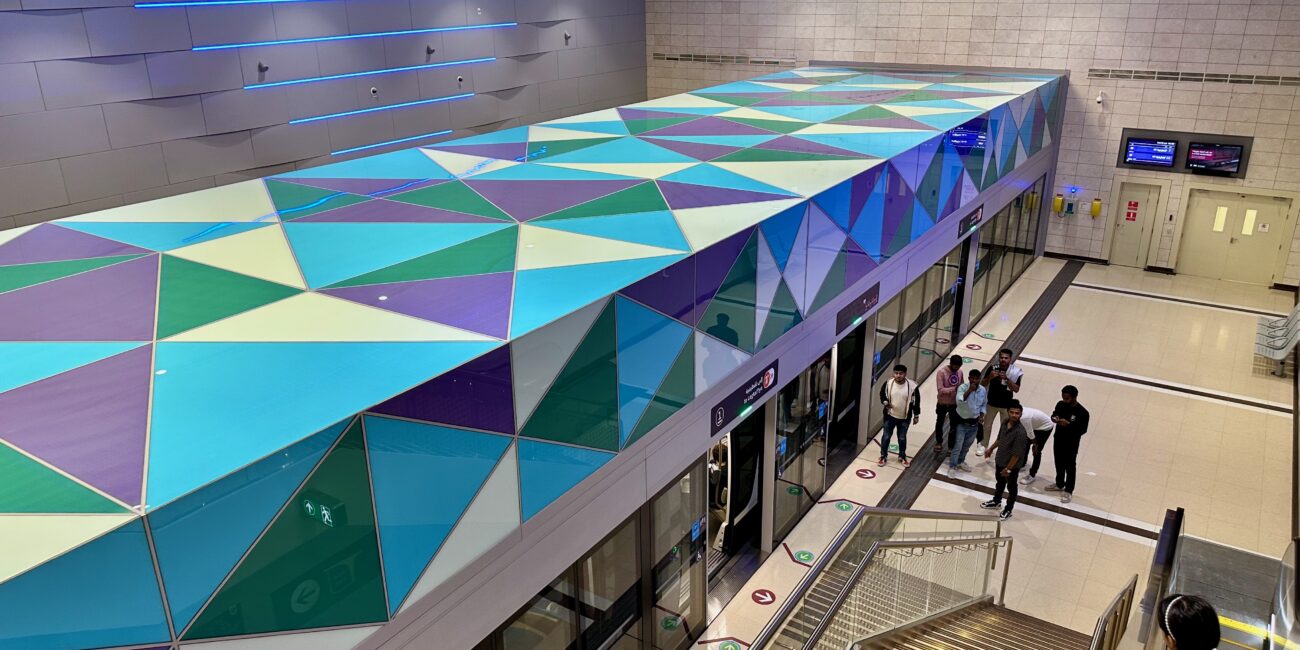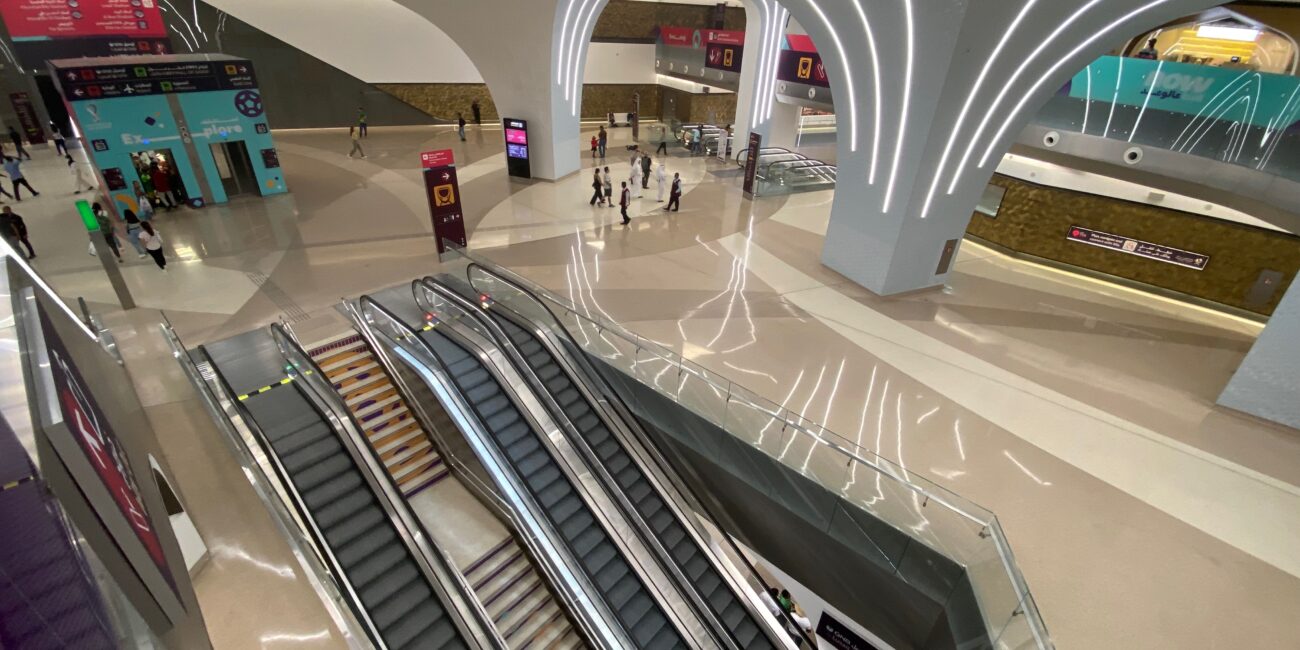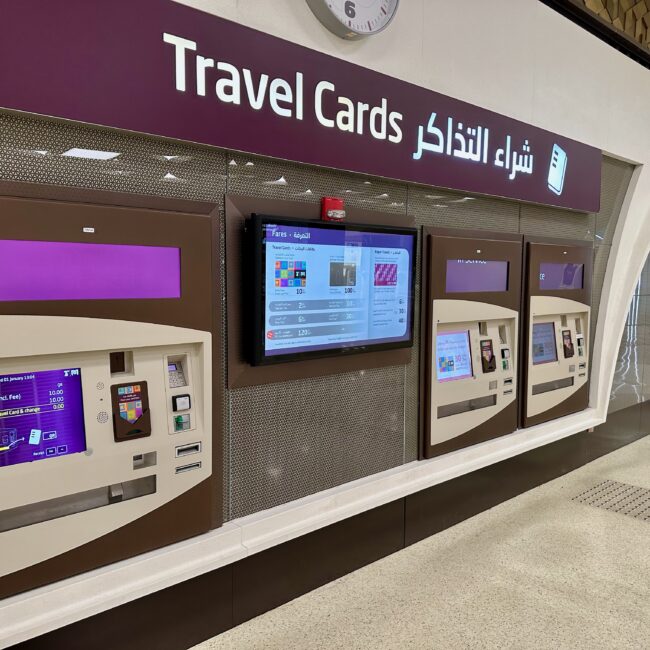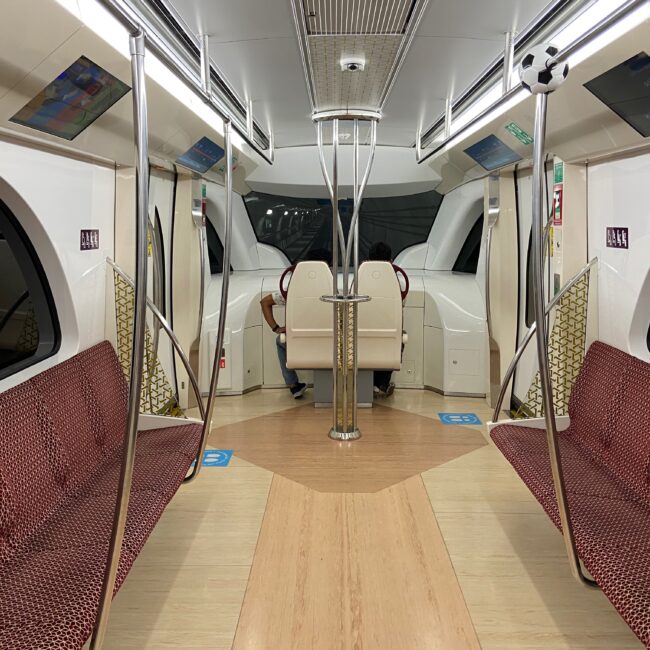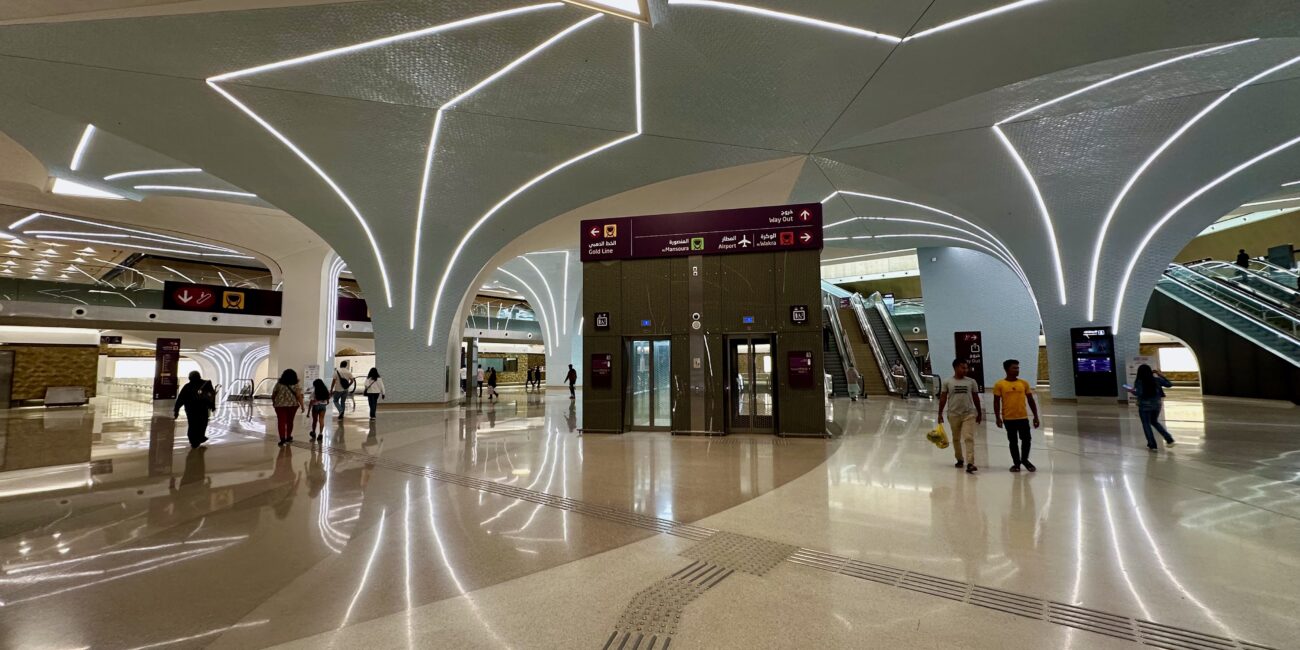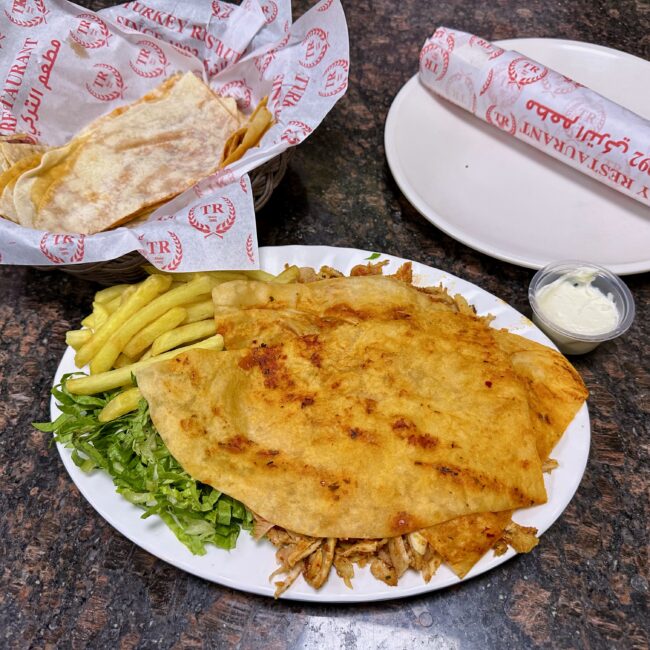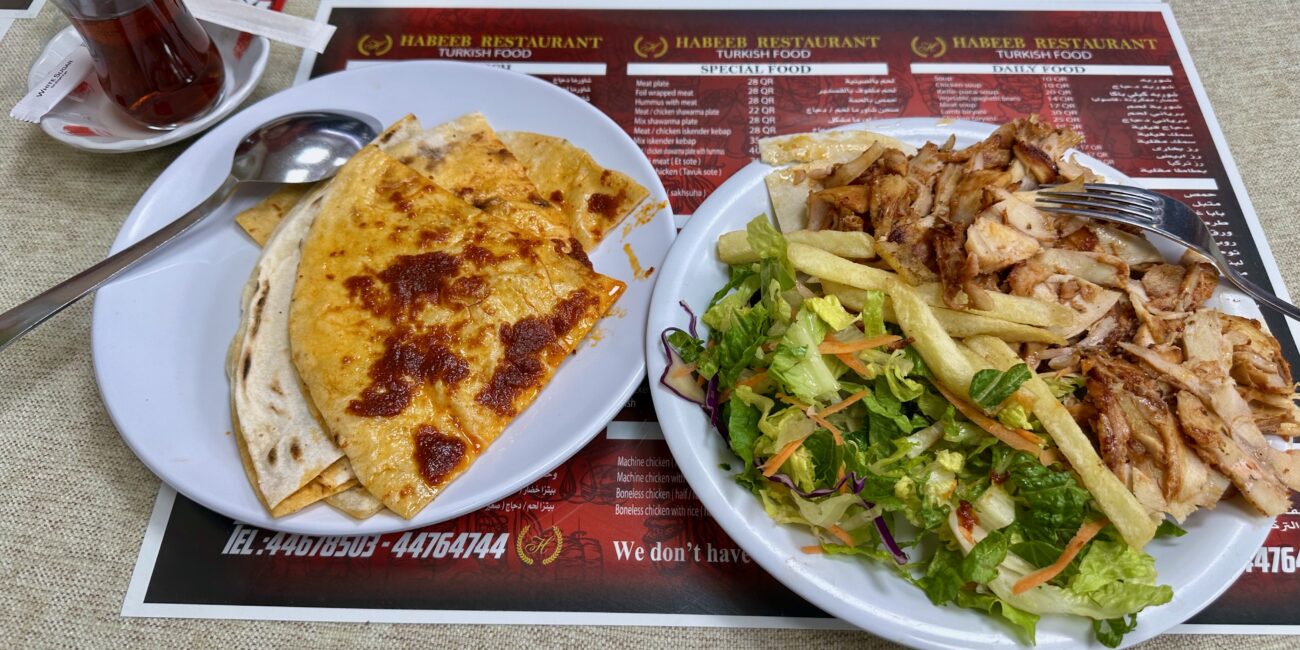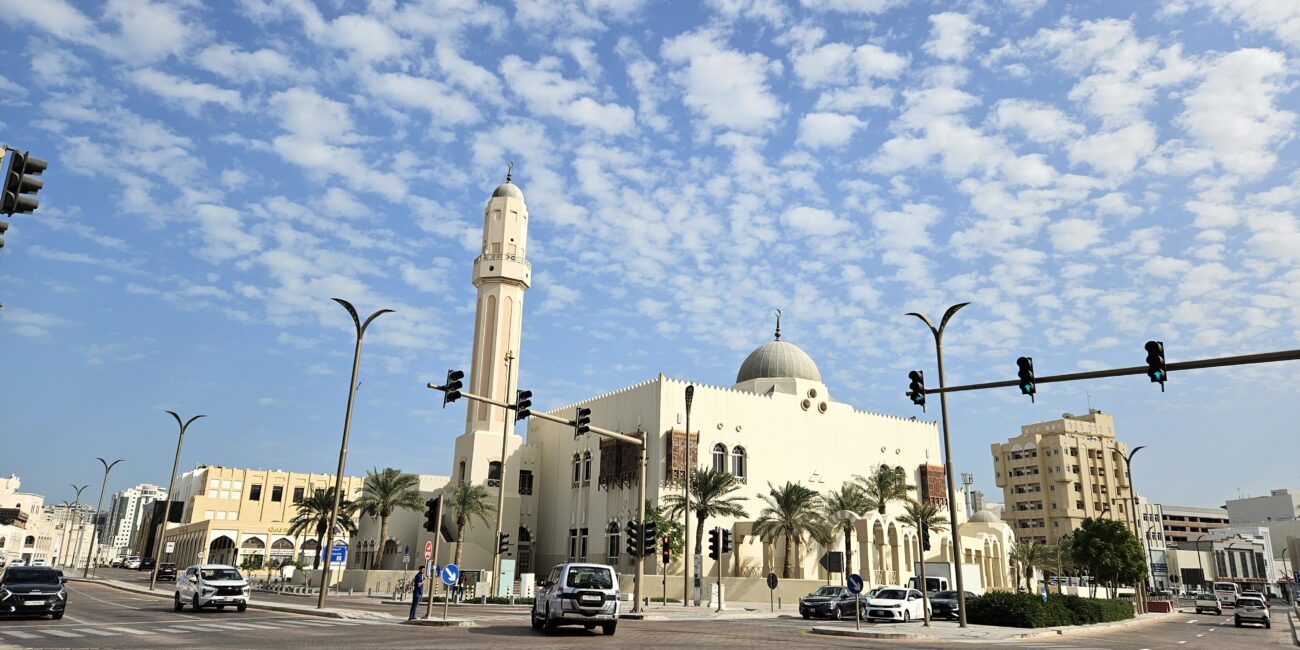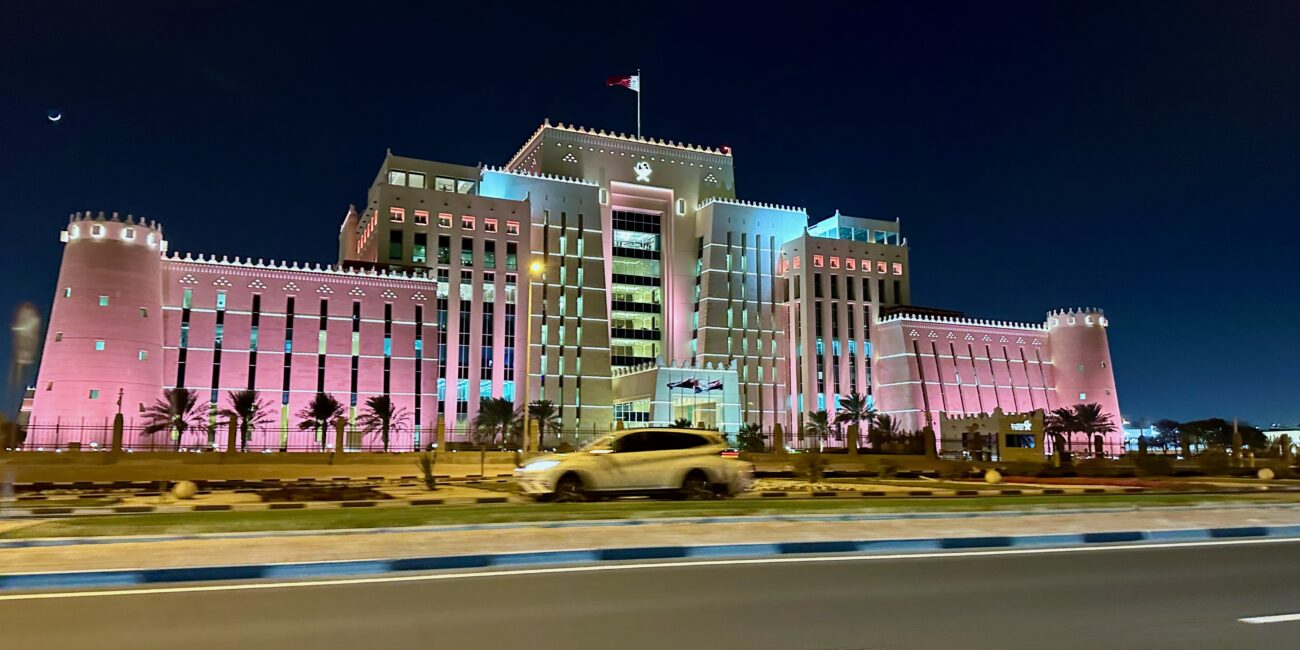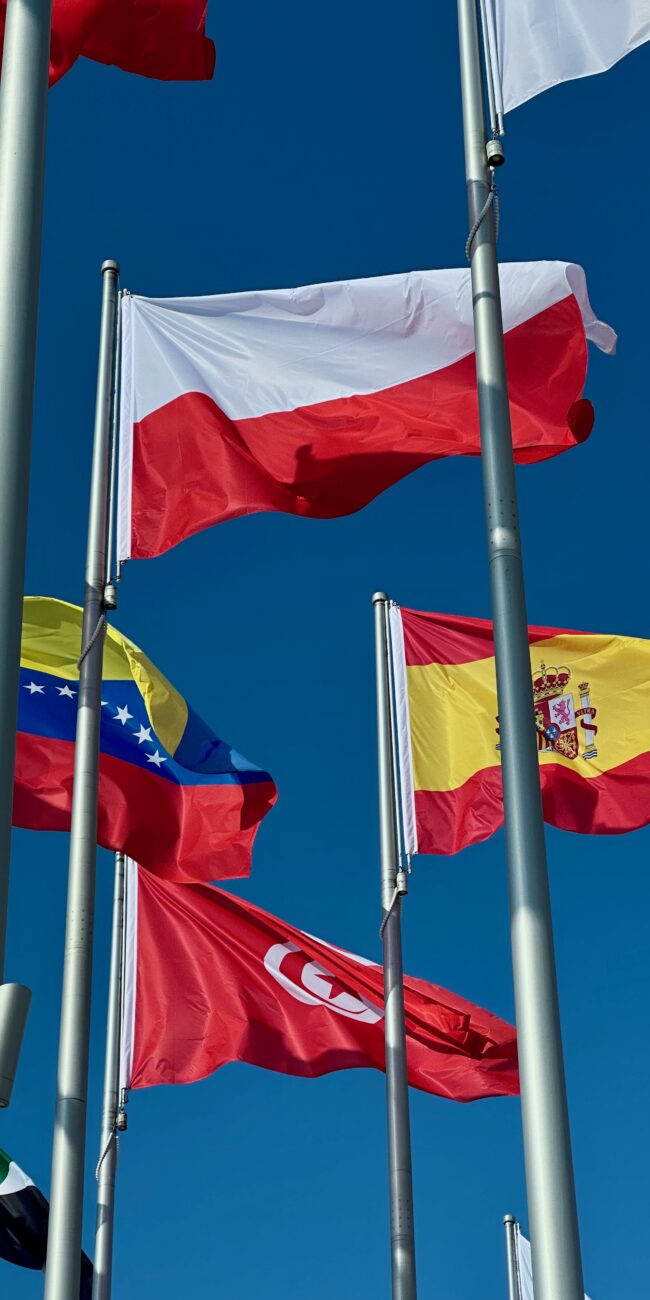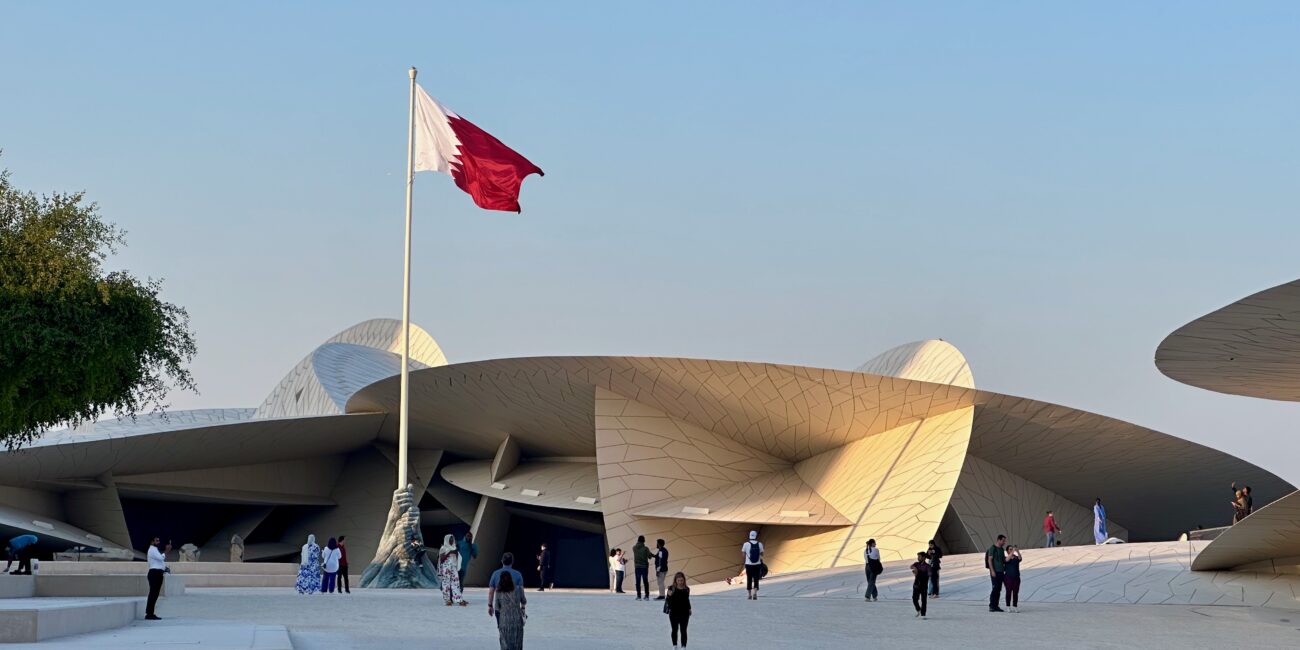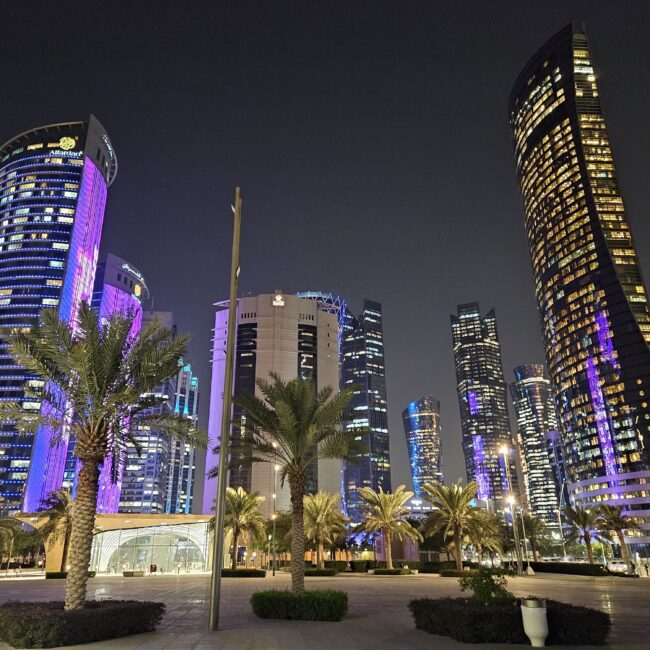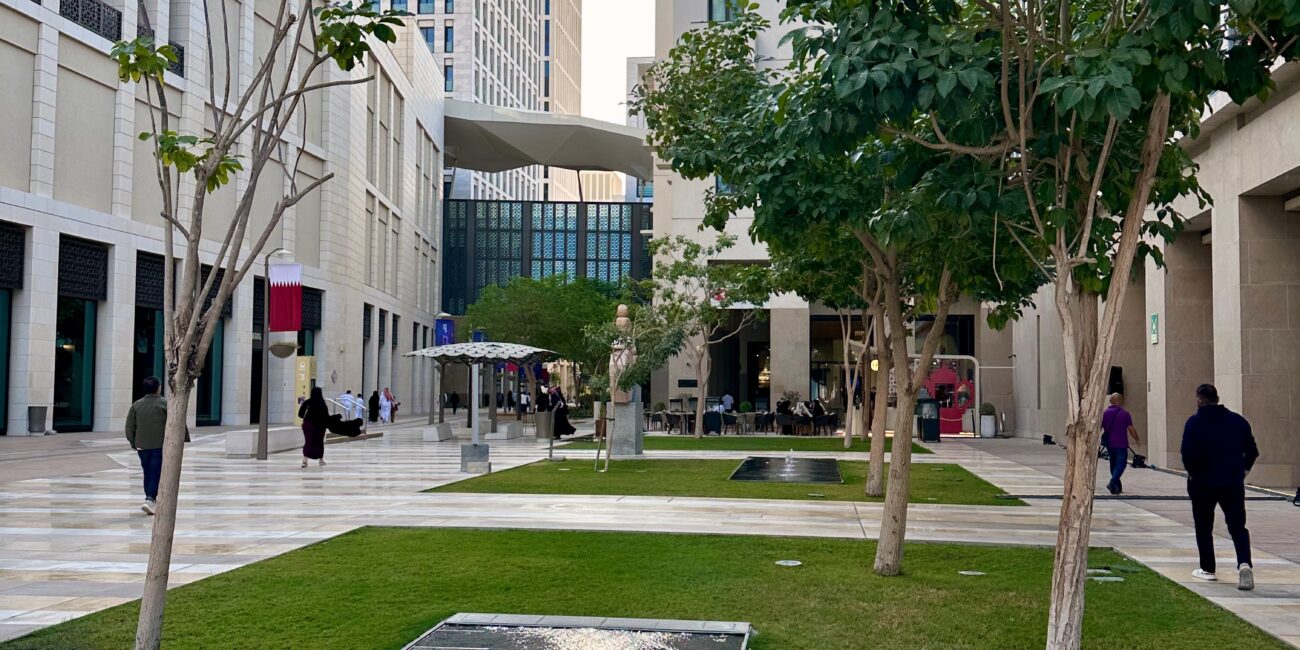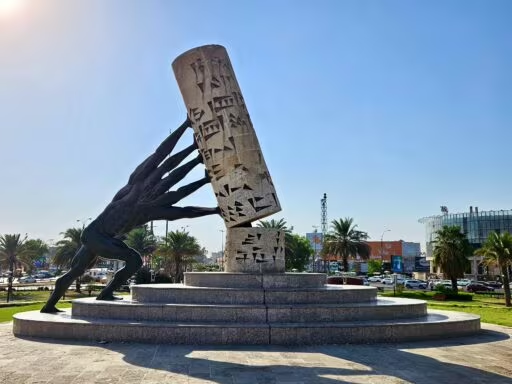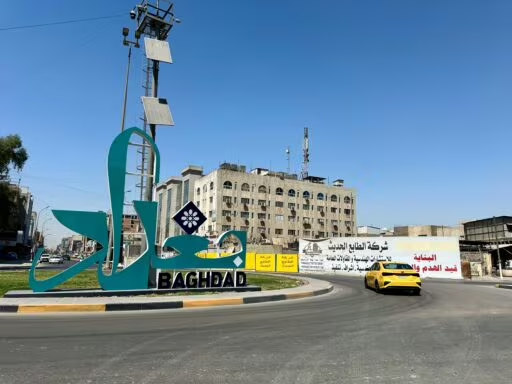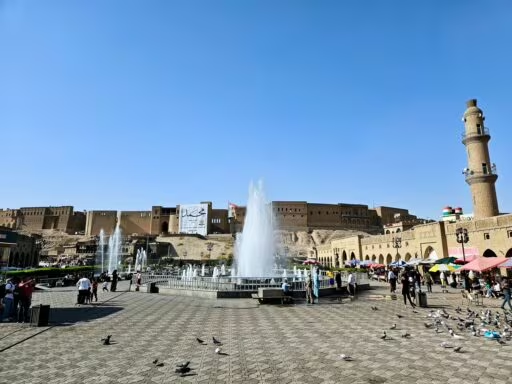This post is also available in:
Polski
Hello! 👋
Our New Year’s journey begins in Doha, where we’ll spend a few days on a stopover with Qatar Airways. It’s the perfect opportunity to explore Qatar, see what it has to offer, and find out if it’s truly a destination worth a longer stay.
The plan is simple – a bit of sightseeing, some relaxation, and of course, welcoming the New Year in a unique setting. Qatar has been working hard to attract tourists, promoting itself as a modern country full of luxury and attractions. But is there really enough to do here? Is Doha more than just a stopover destination? Let’s find out!
Where is Doha located?
Doha is the capital and largest city of Qatar, located on the country’s eastern coast along the Persian Gulf. Qatar itself is a small nation on the Arabian Peninsula, with its only land border shared with Saudi Arabia. The rest of its boundaries are surrounded by the sea.
Due to its location, Doha has a desert climate, which means extremely hot summers and mild, warm winters—making the beginning of the year a great time to visit. The city has been developing at an astonishing pace and has become a major financial, business, and cultural hub in the region. It was the host city for the FIFA World Cup 2022, and Hamad International Airport is one of the world’s most important transit hubs.
Thanks to its strategic location and excellent air connections, Doha often serves as a stopover between Europe and Asia—just like in our case. But is it worth staying here for longer? Let’s find out!
Departing from Poland for Qatar
Our journey to Qatar began with a Qatar Airways flight from Warsaw. This time, we traveled without checked baggage, so the airport process was quick and smooth. Online check-in wasn’t available for us, but the queue at the counter was so short that it wasn’t an issue at all.
Departure from Warsaw
We took a direct flight to Doha, although we initially thought we’d be flying on a Dreamliner. Instead, we were greeted by an Airbus, a bit smaller but packed to capacity. The plane was completely full, but fortunately, the flight went smoothly without any major issues.
Passport check-in in Doha
After landing at Hamad International Airport, everything went smoothly… until passport control. Despite the terminal being filled with numerous immigration counters—likely a remnant from the FIFA World Cup 2022—we still ended up waiting in line for nearly 40 minutes. The staff worked efficiently, but there were simply a lot of people. Fortunately, there were no issues or extra questions—just a quick passport check, a stamp, and we were on our way.
Visas and documents
Qatar isn’t one of those countries where you need to deal with complicated paperwork before traveling. Good news for Polish travelers – no visa required! If you’re planning a stay of up to 90 days, you simply land, go through passport control, and enter the country without any additional documents.
The only thing to keep in mind is passport validity—it must be valid for at least six months from the date of entry. During passport control, officials may ask for your hotel reservation, so it’s a good idea to have it handy on your phone. This is especially important if you’re staying with friends, as they might want to verify your accommodation details.
Insurance? Not mandatory, but highly recommended. Medical care in Qatar isn’t cheap, so having coverage can save you from unexpected expenses. If you prefer, you can purchase a local insurance policy through the Qatari Ministry of Health’s system, but for most travelers, a standard international travel insurance policy should be more than enough. Better safe than sorry!
COVID and Other Restrictions: As of now, there are no COVID-related restrictions in Qatar—no tests, no certificates required. However, it’s always a good idea to check the latest regulations before your flight, as things can change. Better to be informed than caught off guard!
Accommodation
We took advantage of the Qatar Stopover program offered by Qatar Airways, which allows travelers to book accommodation at a discounted rate through the Discover Qatar platform. If you have a longer stopover in Doha, this is a great option—instead of spending hours at the airport, you can stay in a comfortable hotel and get some proper rest.
We stayed at Hyatt Regency Oryx Doha, a hotel I had already experienced back in 2022, before the FIFA World Cup. Back then, it left a great impression—comfortable rooms, efficient service, and a standard you’d expect from a five-star hotel.
This time, however, not everything went perfectly. It was clear that the hotel was preparing for a big New Year’s Eve event, which meant more guests and a bit of chaos. The biggest downside? Despite having a reservation with a clearly stated arrival time (7:00 PM), we still had to wait 20 minutes for our room to be ready. For a five-star hotel, this was disappointing—especially considering that a late check-in should mean the room is already prepared well in advance.
Aside from that, the overall comfort of our stay was still at a high level. The rooms were spacious, quiet, and well-equipped—just like in 2022. The hotel also has a pool and gym, though this time we didn’t get a chance to use them. In summary—a solid choice for a stopover, but the organization could have been better.
Traffic conditions
While traveling through Qatar, we noticed that driving here is much more comfortable compared to Saudi Arabia. The driving culture is similar to what you’d find in the UAE—drivers are generally polite, and traffic is well-organized.
Qatar places a strong emphasis on road safety, so it’s important to be aware of and follow the local traffic regulations:
- Speed Limits: In urban areas, the speed limit is 60 km/h, while on highways and intercity roads, it goes up to 120 km/h.
- Driving Under the Influence: Qatar enforces a zero-tolerance policy for driving after consuming alcohol. Even the smallest amount of alcohol in your system can lead to severe penalties, including fines of up to 50,000 QAR and imprisonment for up to 36 months.
- Seat belts: All passengers are required to use them.
- Phone use: Using a cell phone while driving is strictly prohibited.
- Points System: Qatar has implemented a traffic points system for violations. Accumulating 14 points can result in a suspended driver’s license for residents, while for foreigners, it may lead to the confiscation of their international driving permit.
Car travel
Qatar has a comprehensive speed enforcement system, which includes both fixed speed cameras and mobile patrols. These devices are strategically placed along major urban roads and intercity highways to enhance road safety and ensure compliance with speed limits.
Exceeding the speed limit in Qatar can result in hefty fines. The penalty amount depends on how much the limit was exceeded and where the violation occurred. Authorities take speeding seriously, especially in urban areas and near schools, where stricter enforcement is in place.
Currently, there are no fully operational toll roads in Qatar. While there are plans to introduce a toll system on certain routes in the future, no charges are being collected at this time.
Public transport in Doha
Getting around Doha using public transportation is fairly convenient, although some places can be difficult to reach without a car. The city offers a modern metro system, buses, and taxis, making navigation relatively simple. Metro is by far the most convenient option, but since it doesn’t cover every part of the city, you may need to rely on buses or ride-hailing apps like Uber and Karwa to reach certain destinations.
Bus communication
Doha has a bus network operated by Mowasalat, with buses branded under the Karwa name. They are modern, air-conditioned, and serve many routes across the city. Sounds good? Theoretically, yes. But in practice… well, not exactly.
You can’t just hop on a bus and buy a ticket from the driver. To use the bus network, you need a Karwa Smartcard, which can be purchased at the airport, major bus stations, or select retail stores. There are three options available:
- 10 QAR – a card for two trips within 24 hours,
- 20 QAR – unlimited rides for 24 hours,
- Rechargeable card – you pay as much as you drive.
Without this plastic card, there’s no way to pay for your bus fare, so it’s best to get one in advance—otherwise, you might find yourself stuck at the bus stop.
Are the Buses Comfortable? In terms of standard, yes. The buses are clean, spacious, and well-air-conditioned, making the ride comfortable. You can sit back, relax, and reach different parts of the city without much hassle. Plus, the fares are very affordable, especially compared to taxis or Uber.
Where do the buses go?
Buses serve a large part of the city, including:
- ✅Hamad International Airport,
- ✅ Corniche and downtown Doha,
- ✅ Katara Cultural Village,
- ✅ The Pearl Qatar,
- ✅ Doha Festival City and other shopping centers.
Does it sound good? Yes, but…
Cons of bus transportation
- ❌ Long waiting times – in theory, buses run every 20 minutes, but in practice you sometimes have to wait longer.
- ❌ The routes are not always intuitive – public transportation is not yet at a level like in Dubai, for example, so sometimes you have to do a bit of thinking.
- ❌ You won’t get everywhere by bus – if you plan to visit something outside the city, public transportation is out.
If you have time, aren’t in a rush, and want a budget-friendly way to get around, then buses can be a good option. But if comfort and efficiency matter more, metro, Uber, or renting a car will be a much better choice.
Tramlines
Unlike many other major cities, Doha doesn’t have a traditional tram network. However, in Lusail, a modern city located about 20 km from the capital, a state-of-the-art tram system operates, complementing Qatar’s public transportation network.
Launched in 2022, the Lusail Tram currently covers around 5.5 km of tracks, but the network is set to expand to 28 km, featuring four lines and 25 stations. A key connection point is Legtaifiya Station, where passengers can transfer directly to Doha’s metro, making it much easier to travel between districts.
In Lusail, tram stations look more like metro stations rather than traditional tram stops. Many are underground, providing shelter from the scorching sun and making travel more comfortable. Interestingly, access to the tracks is completely blocked off—passengers can’t step up to the platform edge until the tram arrives. Only then do the glass barriers open automatically, significantly improving safety and making the system function more like a metro than a typical tram network.
Ticketing system
Trams in Lusail use the same ticketing system as the Doha Metro. The Travel Card works for both, so there’s no need to buy separate tickets. This makes it a convenient option, especially for tourists and daily commuters relying on public transport.
Modern, quiet, and well-organized—the Lusail Tram is an interesting addition to Qatar’s public transport system. It may not be as popular as the metro yet, but for residents and visitors to Lusail, it offers a convenient alternative to driving.
Subway
During my visit to Doha in 2022, before the FIFA World Cup, I was impressed by the newly opened metro. The cleanliness, station design, and overall modernity of the system left a strong impression on me. This time, I wanted to share the experience with Jadzia, and I have to say—the metro still maintains a high standard.
The metro in Doha consists of three lines:
- 🔴 Red line: runs from north to south, connecting Hamad Airport to the city center, among others.
- 🟢 Green Line: runs from east to west, serving key points such as the Qatar National Museum.
- 🟡 Gold Line: connects major tourist attractions, including Souq Waqif and Katara Cultural Village.
For tourists, this is great news, as the metro reaches most of the must-visit places in Doha. Even better, many hotels offered through the Discover Qatar Stopover program are located near metro stations, making it much easier to get around the city.
One pleasant surprise was that passengers willingly give up their seats for women, which isn’t always the norm in many Arab countries. Additionally, ticket inspections are quite frequent on the metro, so it’s a good idea to always have your ticket or travel card ready.
Ticket fare
Various ticket options are available in the Doha metro:
- Standard Travel Card (plastic): Costs 10 QAR and can be recharged as needed. A one-way trip costs 2 QAR, but there is a daily fare cap of 6 QAR—meaning after three rides, any additional trips that day are free.
- Single-use paper ticket: Available from ticket vending machines at metro stations. It costs 6 QAR for a day pass, allowing unlimited travel for the entire day.
If you plan to use the metro multiple times in a day, getting a day pass is a great option. For just 6 QAR, you can travel unlimited throughout the day, making it an incredibly cost-effective choice. The ticket is valid from the moment of purchase until 2:59 AM the next day.
SIM card
During our recent trip, which included both Qatar and the UAE, we decided to use eSIM technology to stay connected without swapping physical SIM cards. Initially, we chose the Middle East eSIM plan from Maya Mobile because of its attractive price. However, upon arriving in the UAE, we quickly realized that our plan didn’t cover the country. Well… bravo to me for reading the details carefully. 😂
So, we turned to another provider—Breeze eSIM, which offered a virtual SIM specifically for the UAE. The refund process for the partially unused Maya Mobile eSIM went smoothly, thanks to their fast customer support. Both Breeze eSIM and Maya Mobile offered competitive pricing compared to other providers like Airalo, making them a solid choice for staying connected in the region.
If you’re planning a trip to Qatar and other Middle Eastern countries, getting an eSIM is definitely worth considering. It helps you avoid issues with local operators and steep roaming charges, making your travels much more convenient.
- 👉 Maya Mobile – the best choice if you want a favorable package for Qatar: Buy eSIM here
- 👉 Breeze eSIM – if you are also traveling to the United Arab Emirates and want more coverage: Check out the offer
By using these links, you’re not only choosing a trusted solution, but also supporting our blog. This helps us continue traveling and sharing practical tips with you. 🚀 Thank you! 😊
WiFi Calling
When traveling to Qatar, WiFi Calling can be a great way to stay connected, especially if you want to avoid expensive roaming fees. With this feature, you can make and receive calls over WiFi, even without a local SIM card, making it a convenient and cost-effective option.
WiFi Calling allows you to make regular phone calls over a WiFi network, instead of relying on your mobile carrier’s signal. In practice, this means that if you have this feature enabled on your phone, you can call Poland and receive calls as if you were back home—without additional charges, as long as your operator offers this service for free.
Food
In Qatar, you’ll have no trouble finding the flavors of the Middle East, and when it comes to quick, affordable food, shawarma is king. Practically everywhere you go, you’ll spot small eateries and food trucks serving thinly sliced, grilled meat—usually chicken or lamb—wrapped in lavash with fresh veggies and sauces. Taste-wise? Top-notch. Price-wise? Just 10-15 QAR for a hearty portion, making it a great budget-friendly meal option.
If you’re craving something more filling, shish taouk (marinated chicken skewers grilled to perfection) is another must-try dish, widely available across Qatar. Many local restaurants also serve machboos—a fragrant rice dish cooked with spices and meat, somewhat similar to biryani. It’s packed with flavor and definitely worth a try if you want a taste of authentic Qatari cuisine.
Interestingly, while Arabic cuisine dominates in Qatar, you can find just about anything—from Indian curries and Turkish kebabs to Asian specialties. The best part? No matter your budget, you won’t go hungry. Whether you’re after affordable street food or a fine dining experience, there’s something for everyone.
For dessert, baklava or lokum (Turkish delight) are definitely worth trying—though after a hefty serving of shawarma and rice, finding room for sweets might be a challenge. But hey, who cares? 😃
Exchange office or ATM?
Exchanging currency or hunting for a money exchange in Qatar is completely unnecessary. You can pay by card almost everywhere, even in places where you might expect cash-only transactions in other countries. Even at Souq Waqif, the traditional market, cashless payments are widely accepted, and small convenience stores, similar to 7-Eleven, also let you pay by card without any issues.
If you have a multi-currency card, currency exchange fees won’t be an issue—you can pay directly in Qatari riyals without extra charges, and the exchange rate is much better than in traditional exchange offices. Plus, there’s no need to carry cash, which is always a bonus when traveling. Safer, easier, and more convenient!
If you still prefer to have some cash on hand, ATMs are everywhere in Qatar—you’ll find them on almost every corner. Withdrawals are simple, but keep in mind that some machines may charge additional fees. So, unless it’s absolutely necessary, paying by card remains the best option—more convenient and often cheaper.
Climate and weather conditions
Qatar has a desert climate, meaning scorching summers and mild, short winters. From May to September, temperatures regularly exceed 37°C, with July being the hottest month, reaching 41°C during the day and staying around 31°C at night.
January is the coldest month in Qatar. Daytime temperatures average around 22°C, while at night, they drop to approximately 14°C. During the day, the weather is usually pleasant, but evenings can feel chillier, especially when it’s windy. During our stay, despite the 21-22°C temperatures, the wind made it feel much colder, so we often found ourselves wearing light jackets for extra comfort.
Rainfall in Qatar is minimal, especially during the winter months. In January, the chance of rain is only 3-5% for the entire month, making precipitation a rare occurrence. Humidity levels remain moderate, creating comfortable conditions for most visitors, without the overwhelming heat and stickiness experienced in the summer months.
Safety
You can move around Qatar safely at any time of day or night. Even during New Year’s Eve at Lusail Boulevard, where nearly 300,000 people gathered, the atmosphere remained calm and orderly, with no signs of aggression or harassment. Qatar consistently ranks among the safest countries in the world, with some of the lowest crime rates globally. Security is a top priority for local authorities, ensuring a safe environment for both residents and visitors.
It’s always good to follow basic safety precautions, although in Qatar, the risk of theft or attacks is minimal. The main thing to keep in mind is respecting local customs—this includes avoiding loud behavior in public, dressing appropriately, and being discreet with public displays of affection.
Although driving culture in Qatar isn’t as chaotic as in Saudi Arabia, impatient drivers are common. Honking and flashing headlights at slower vehicles is just part of the norm. It’s best to stick to the right lane and stay alert, as sudden lane changes happen frequently—defensive driving is definitely a good skill to have here!
English is widely spoken in Qatar, so communication isn’t an issue—whether in hotels, restaurants, or even when interacting with police or security staff. You’ll have no trouble getting around without knowing Arabic.
One particular moment stood out to us. While walking along the Corniche, we approached a mosque near a government building that wasn’t fenced off. It seemed like we could take a close-up photo, but within moments, a plainclothes officer in an unmarked car pulled up next to us. He calmly asked if we needed any help and then politely explained that we shouldn’t be in that area. There was no tension or unnecessary strictness—just a clear explanation of the rules and a friendly indication of where we could go instead.
Instead of any harsh reactions or unpleasant remarks, we received a polite explanation. It was yet another sign that Qatar prioritizes order and security, but without unnecessary tension.
Places we visited in Qatar
During our stay in Qatar, we managed to visit plenty of fascinating places, both in Doha and beyond. From modern districts and historic souks to futuristic boulevards and museums – there’s something here for everyone.
Instead of cramming everything into one article, we’ve put together a separate guide detailing the must-visit places in Qatar. If you’re looking for travel inspiration, check out this post—we highlight what’s truly worth seeing and share a few surprises along the way!
Summary
Qatar is an interesting destination for a short city break, but if you’ve already visited other Arab countries, you might not be overly impressed. The architecture, city layout, and overall atmosphere are quite similar to what you’ll find in Abu Dhabi, so if you’ve been to the UAE before, there won’t be many surprises here.
What makes Qatar stand out is its calm and orderly atmosphere—you won’t find the chaos of Dubai or Riyadh here. It’s clean, safe, and comfortable, making it an easy destination to explore. There’s something for everyone—from modern skyscrapers and luxury shopping malls to traditional souks and fascinating museums.
If you’re only planning to visit Doha, it’s a good idea to check flight prices in advance—with higher fares, the trip might not be worth it. We took advantage of the Qatar Stopover program, which turned out to be a smart choice. Otherwise, flying here just for 2-3 days could have been less appealing financially.
The metro is great for getting around Doha, but if you want to explore beyond the city, renting a car is the best option. Public transport outside Doha is almost nonexistent, so without a car, you won’t get very far. We drove a regular sedan, which was perfectly fine for the city and main highways. However, if you’re planning to have some fun in the desert, a 4×4 is an absolute must.
It’s a great place for a few days, especially if you enjoy modern Arab cities and want to relax in a calm atmosphere. For a longer stay? Only if you’re planning to unwind by the hotel pool and don’t mind the limited variety of attractions.

